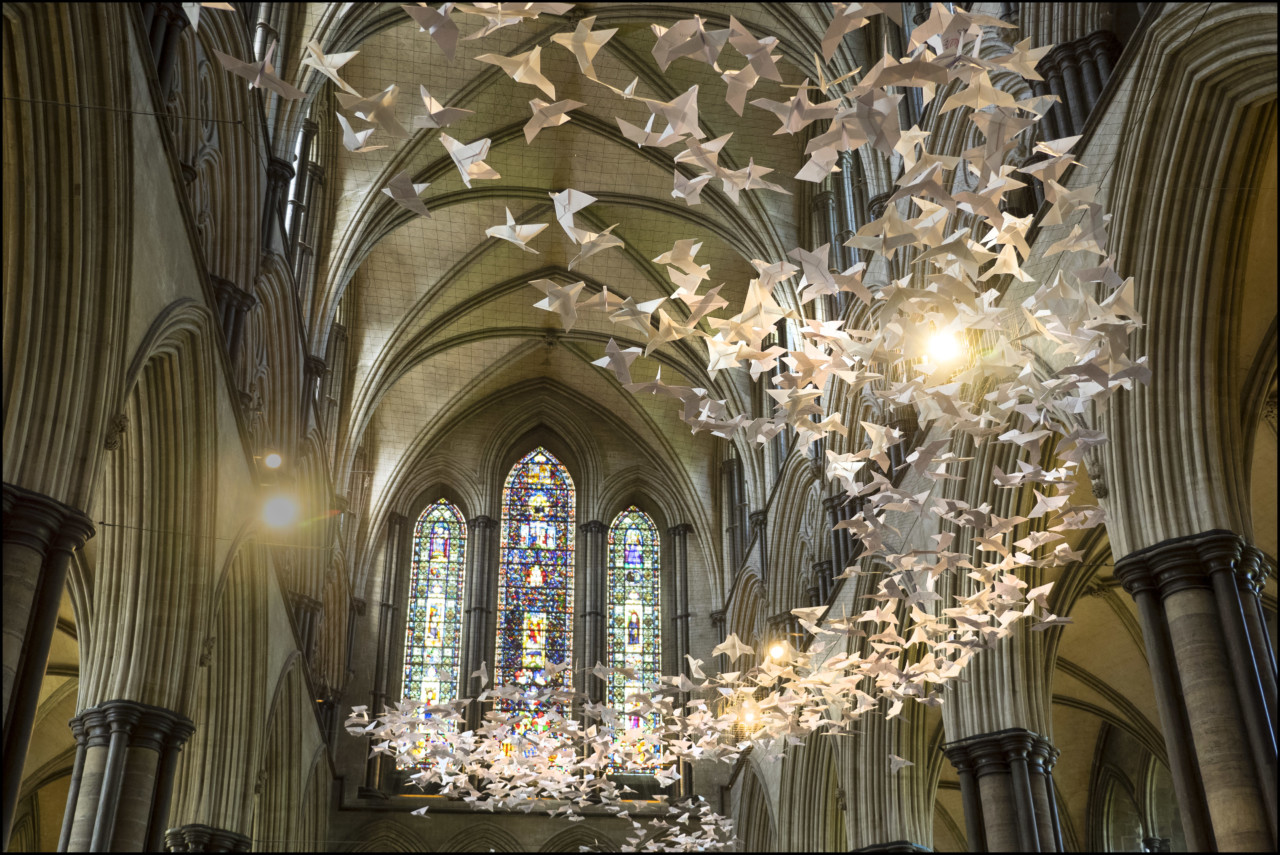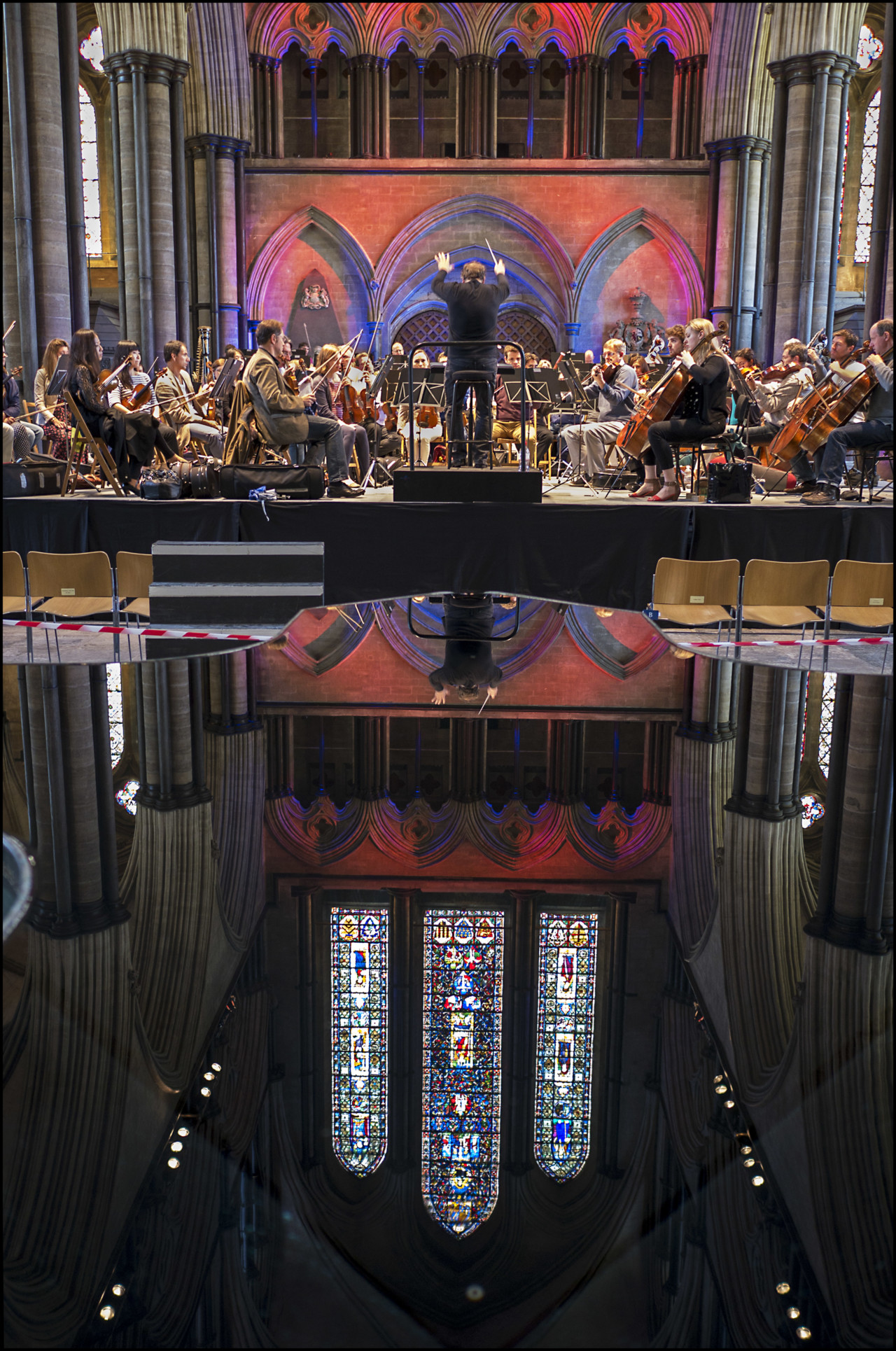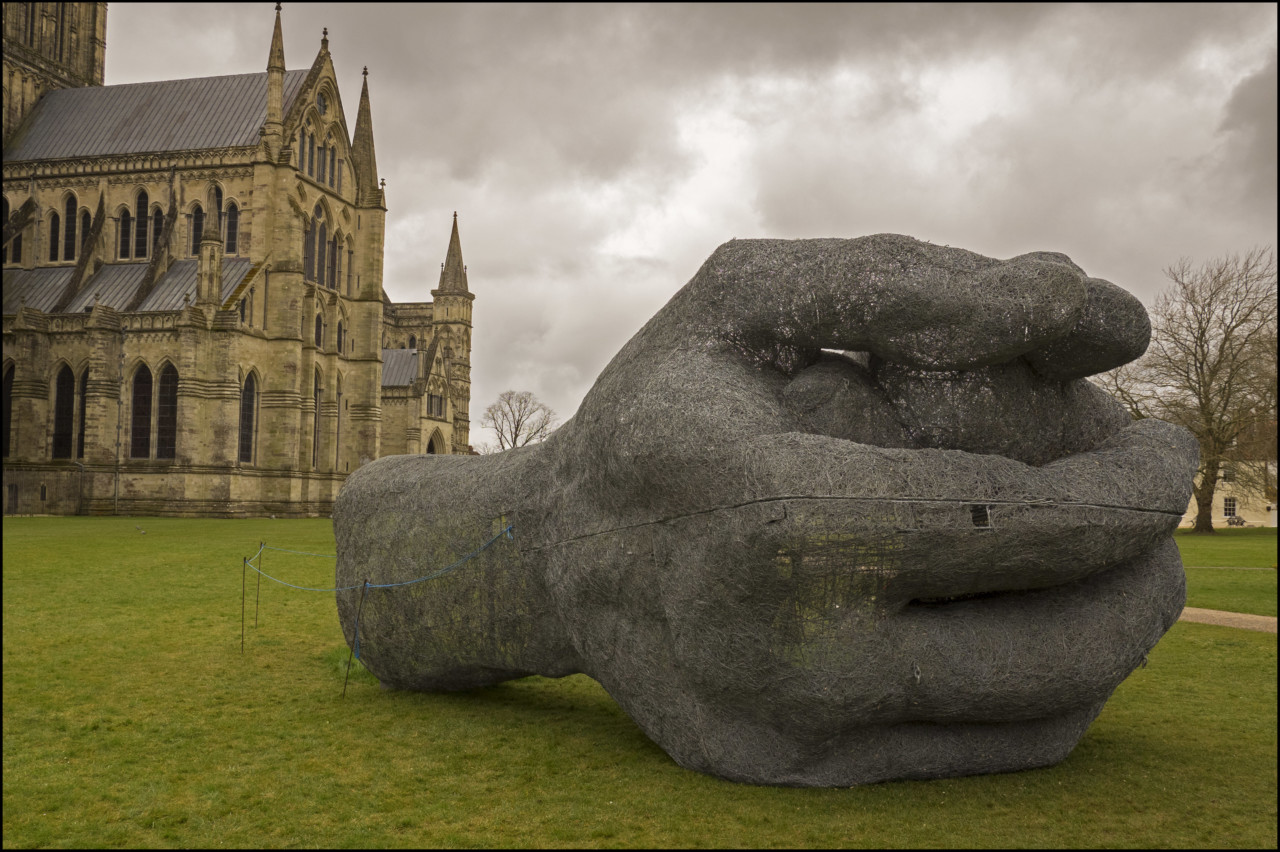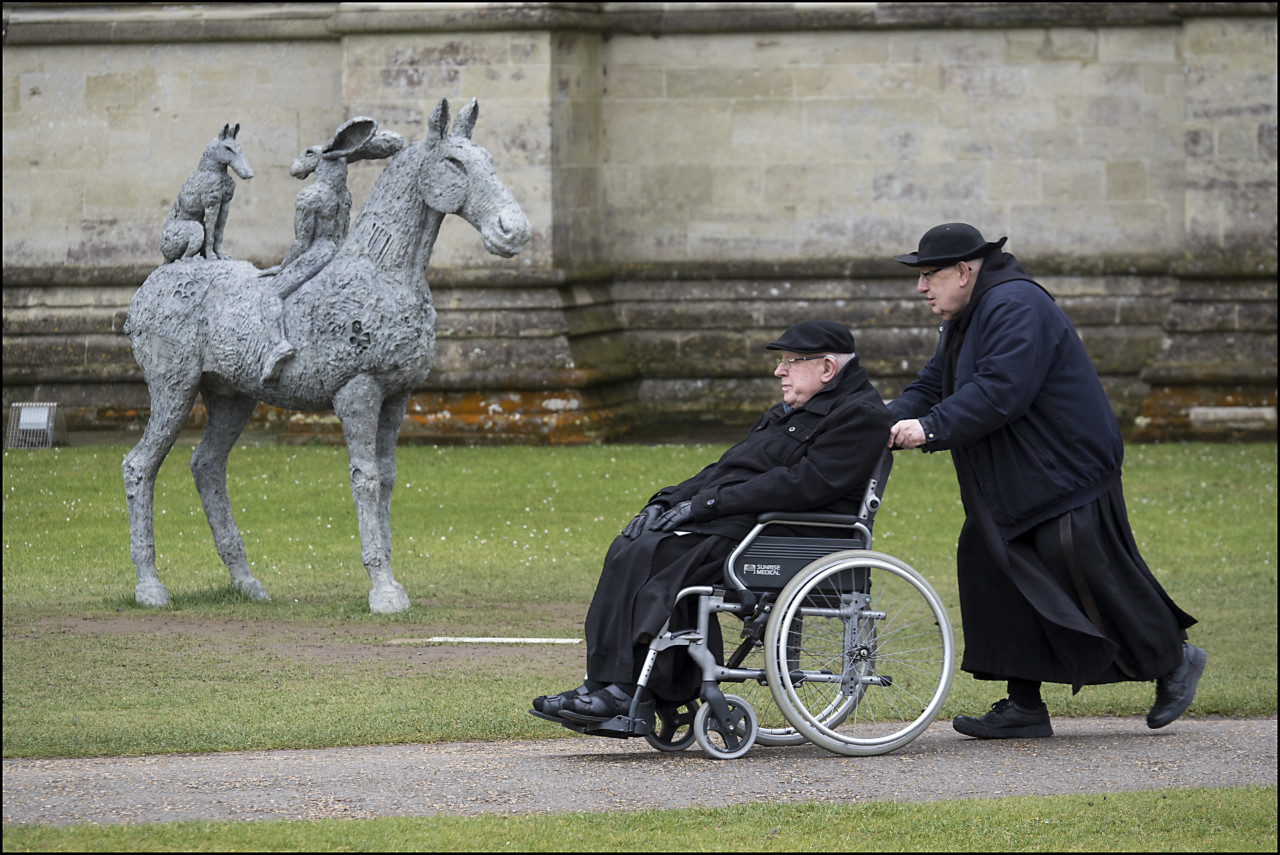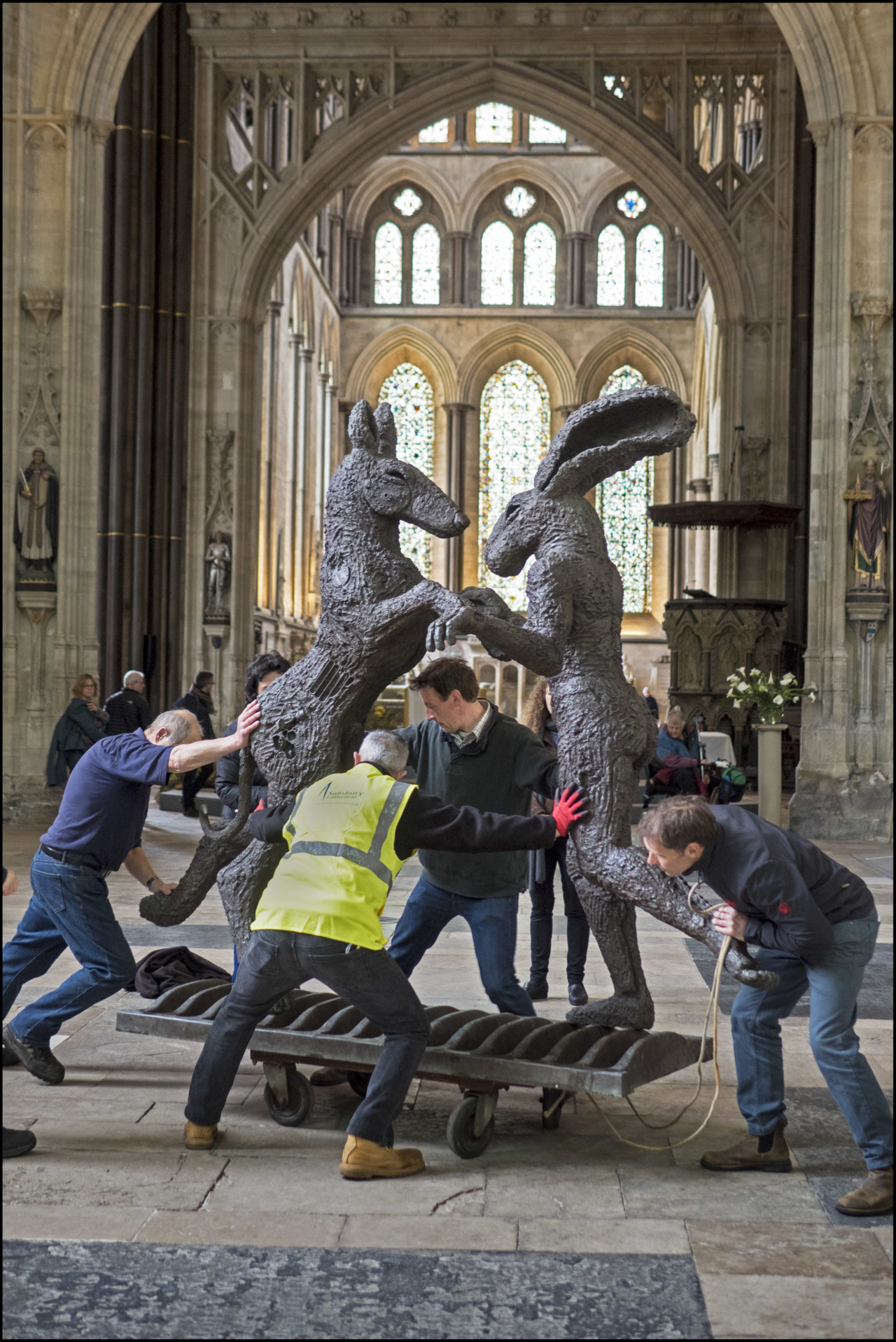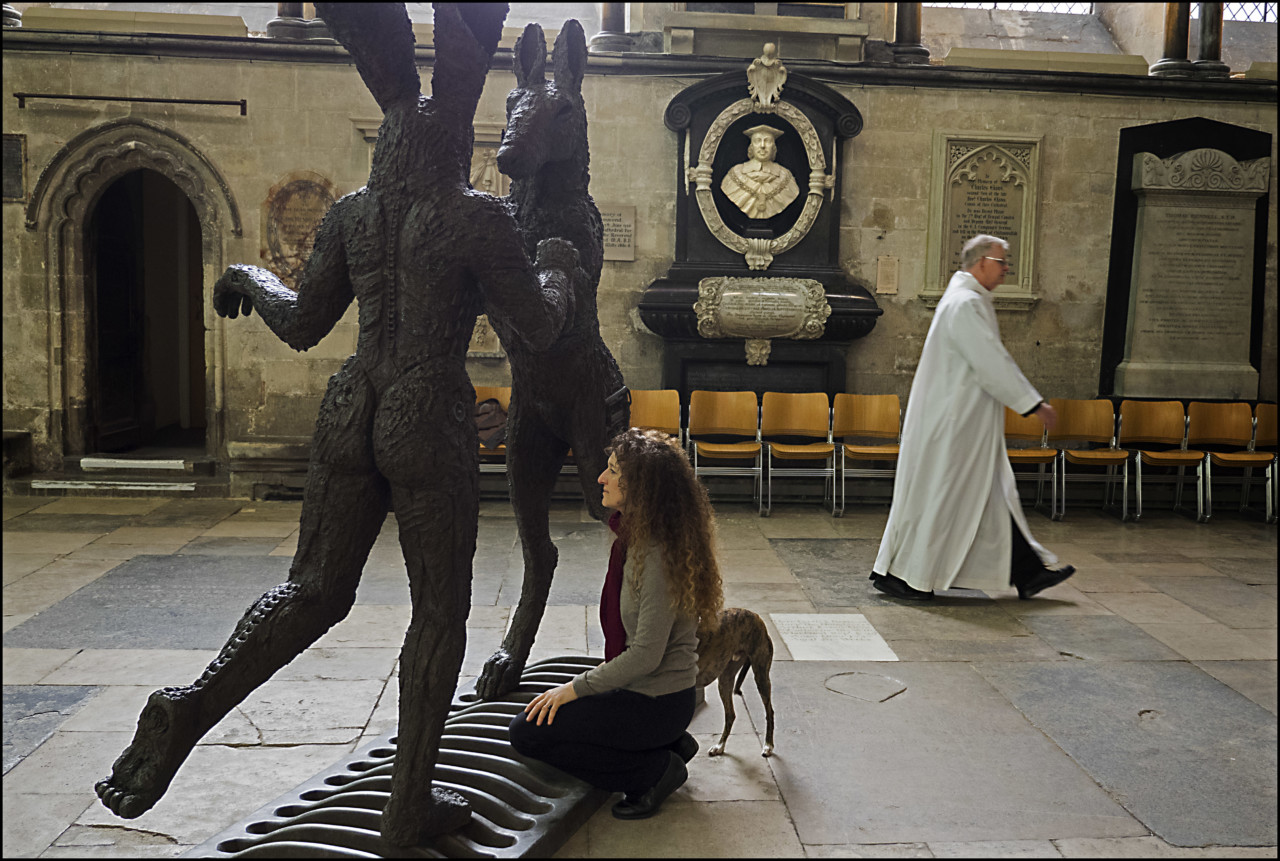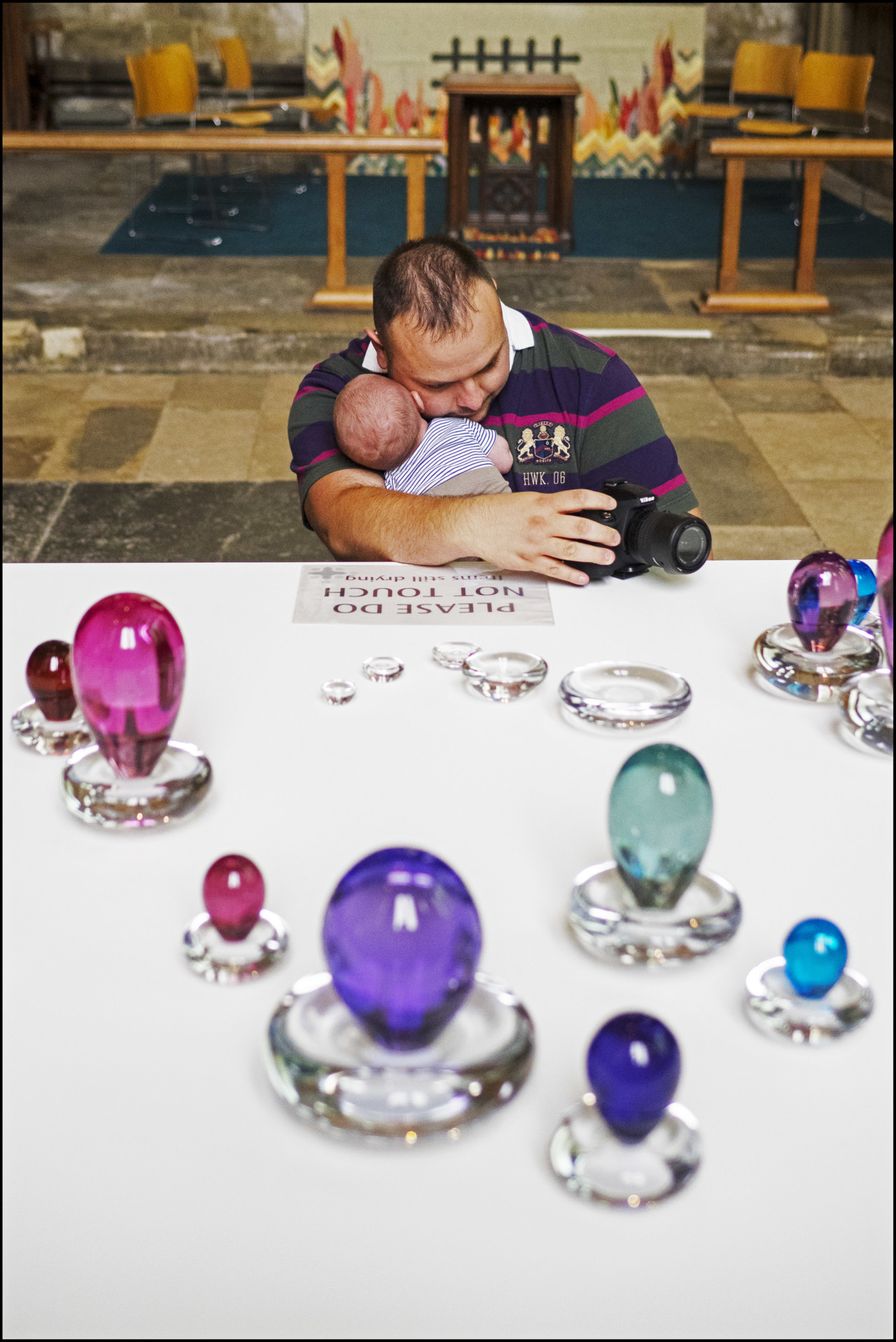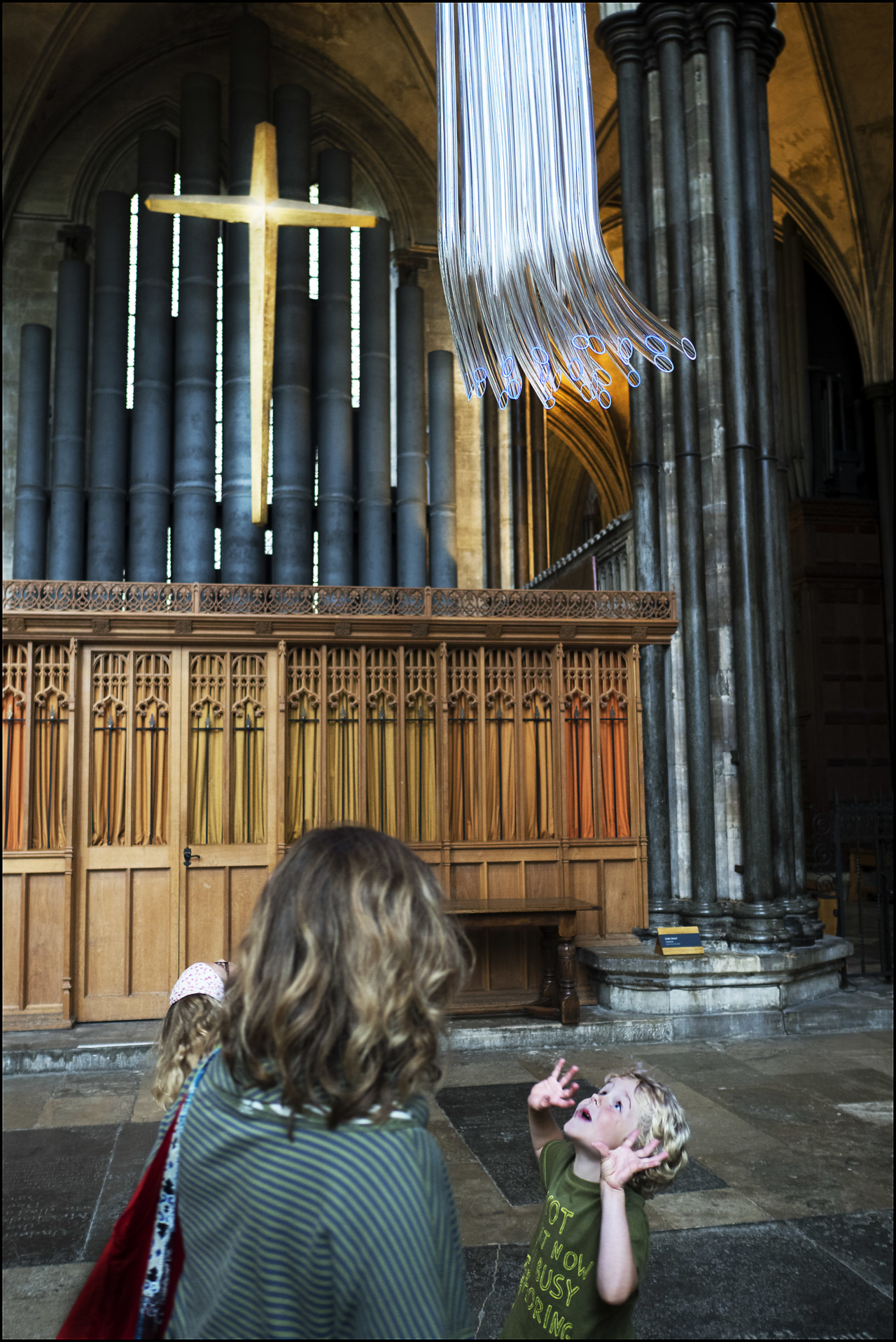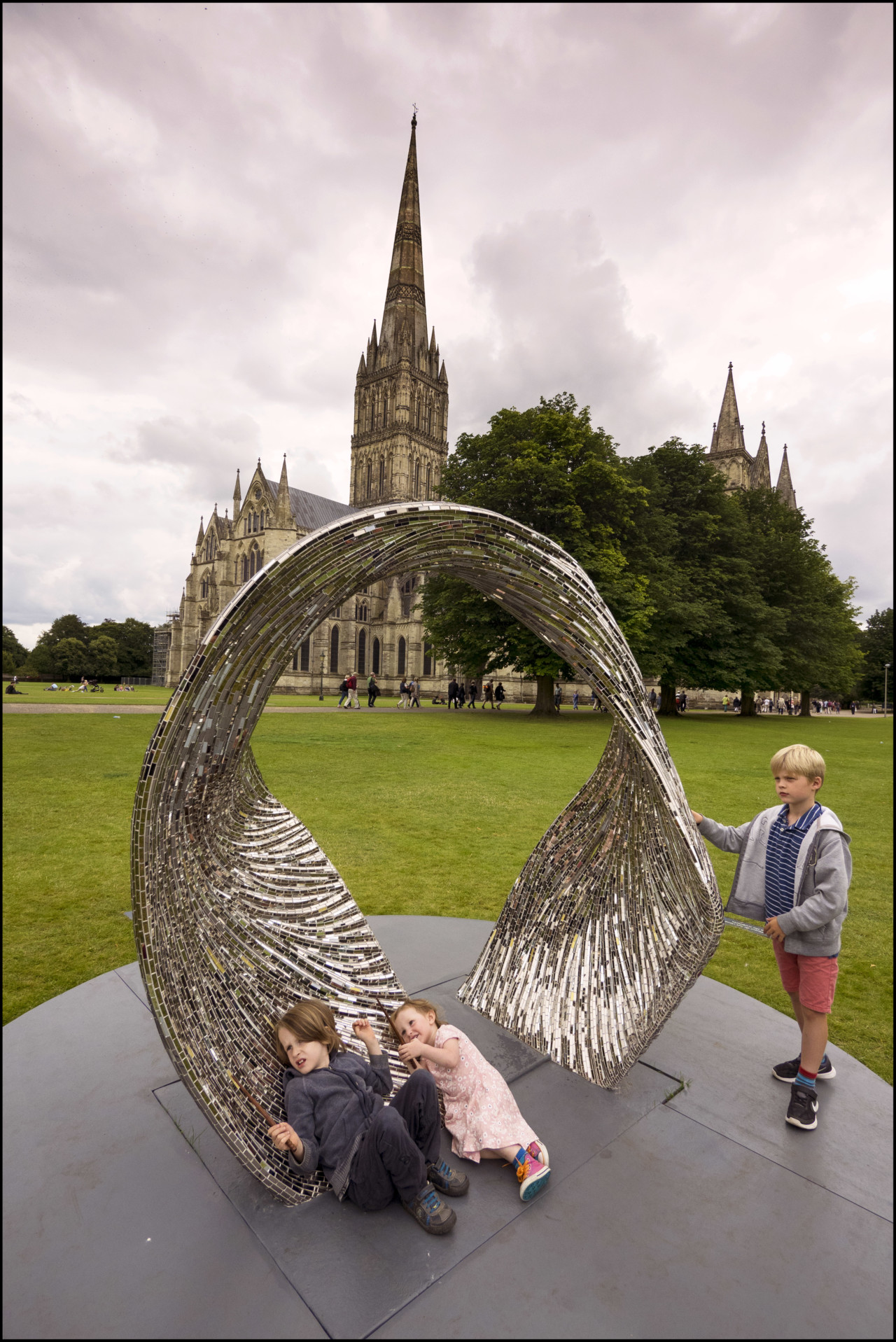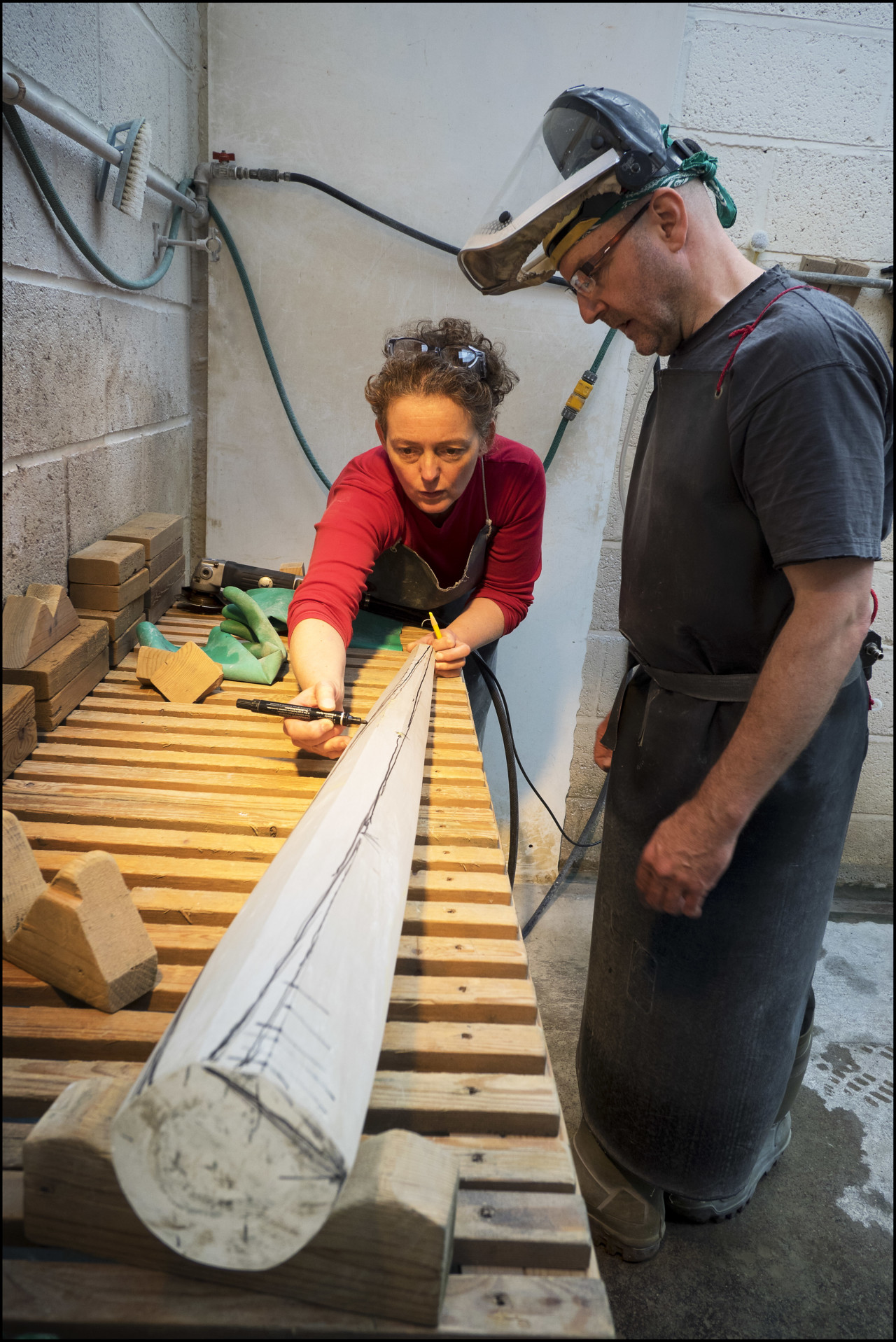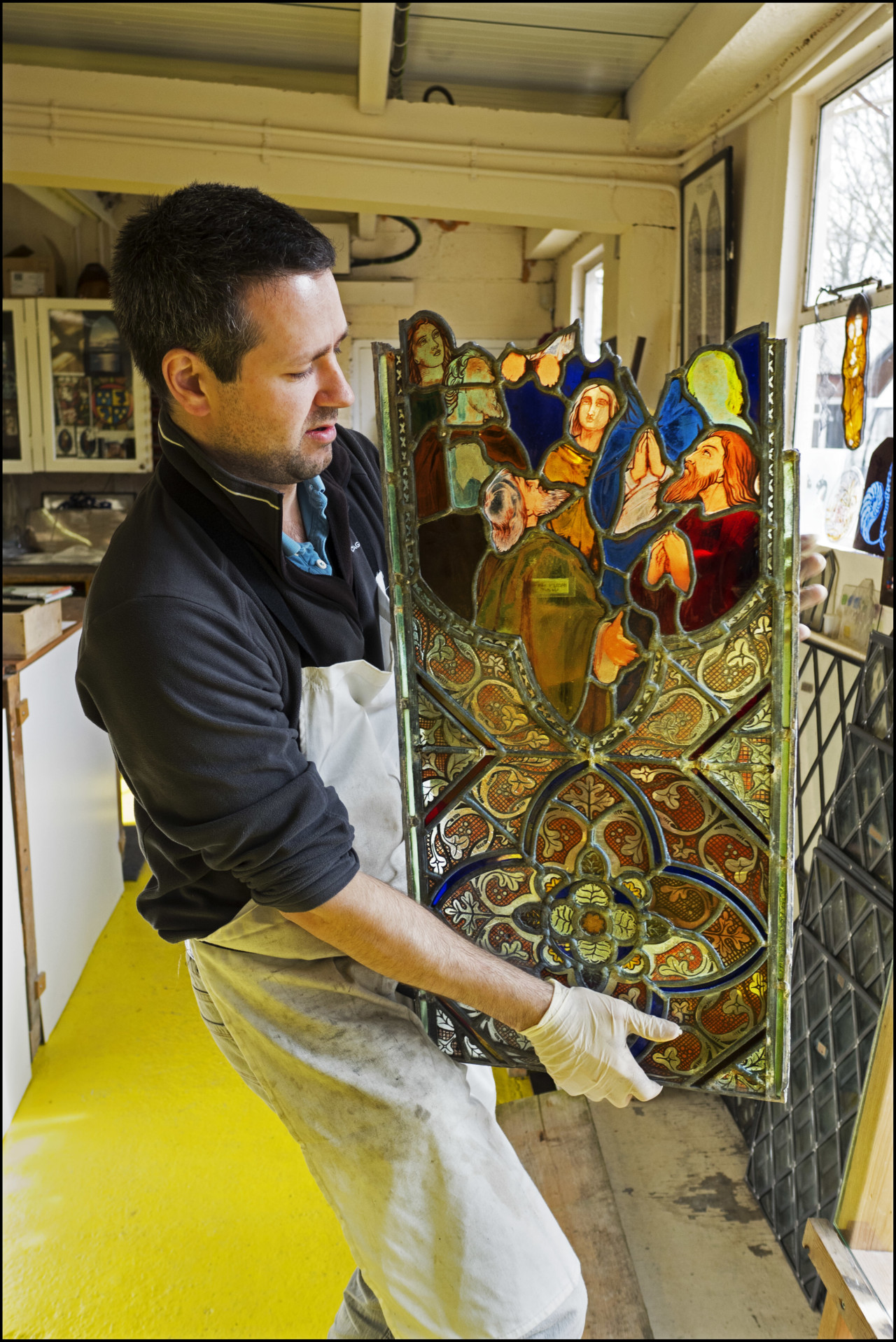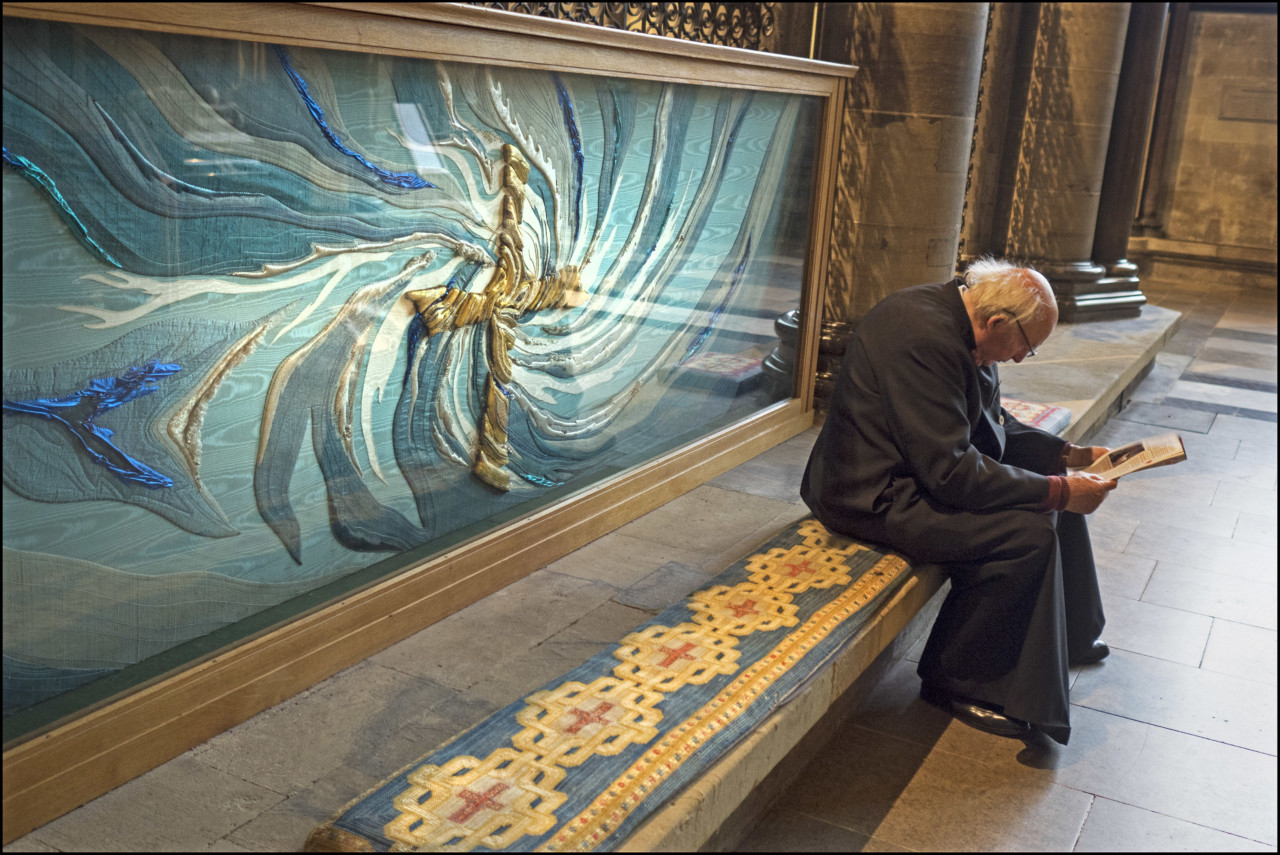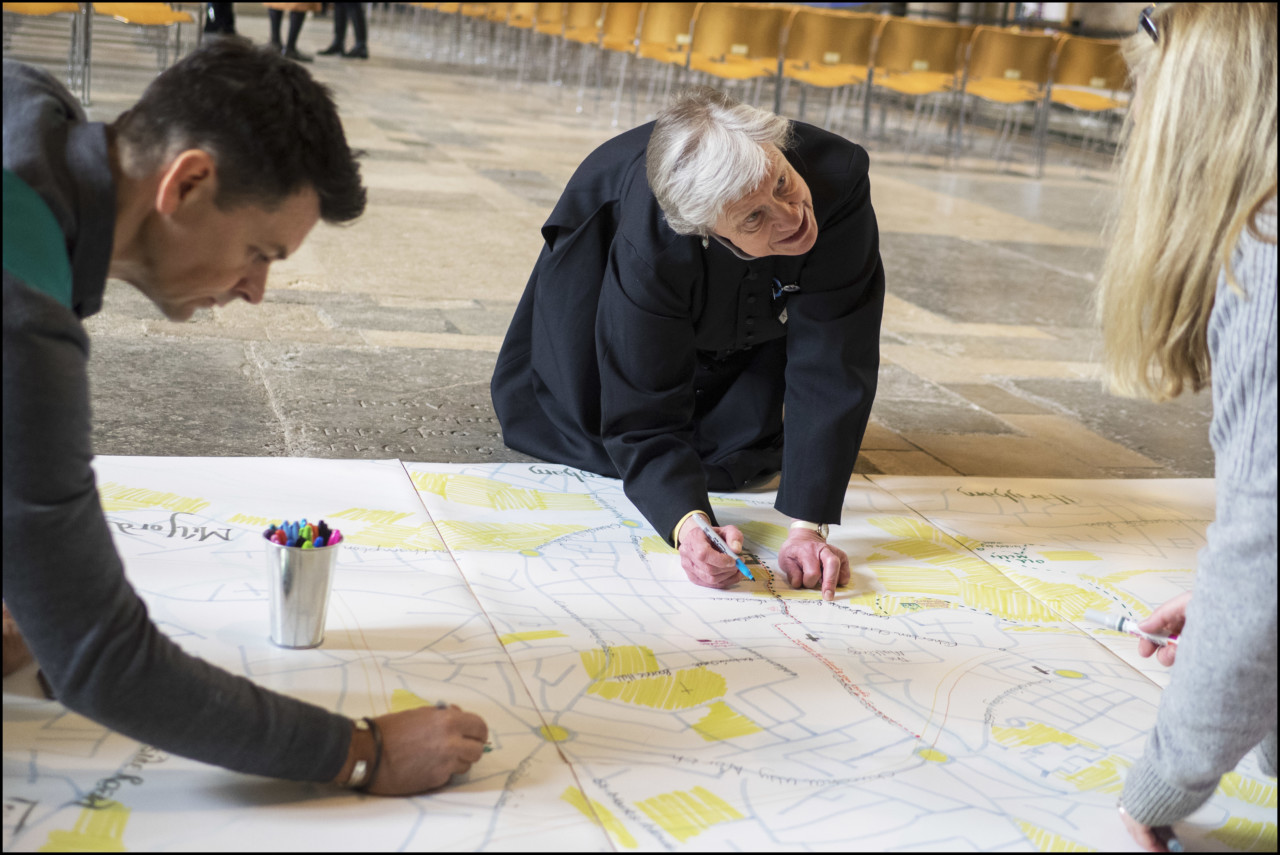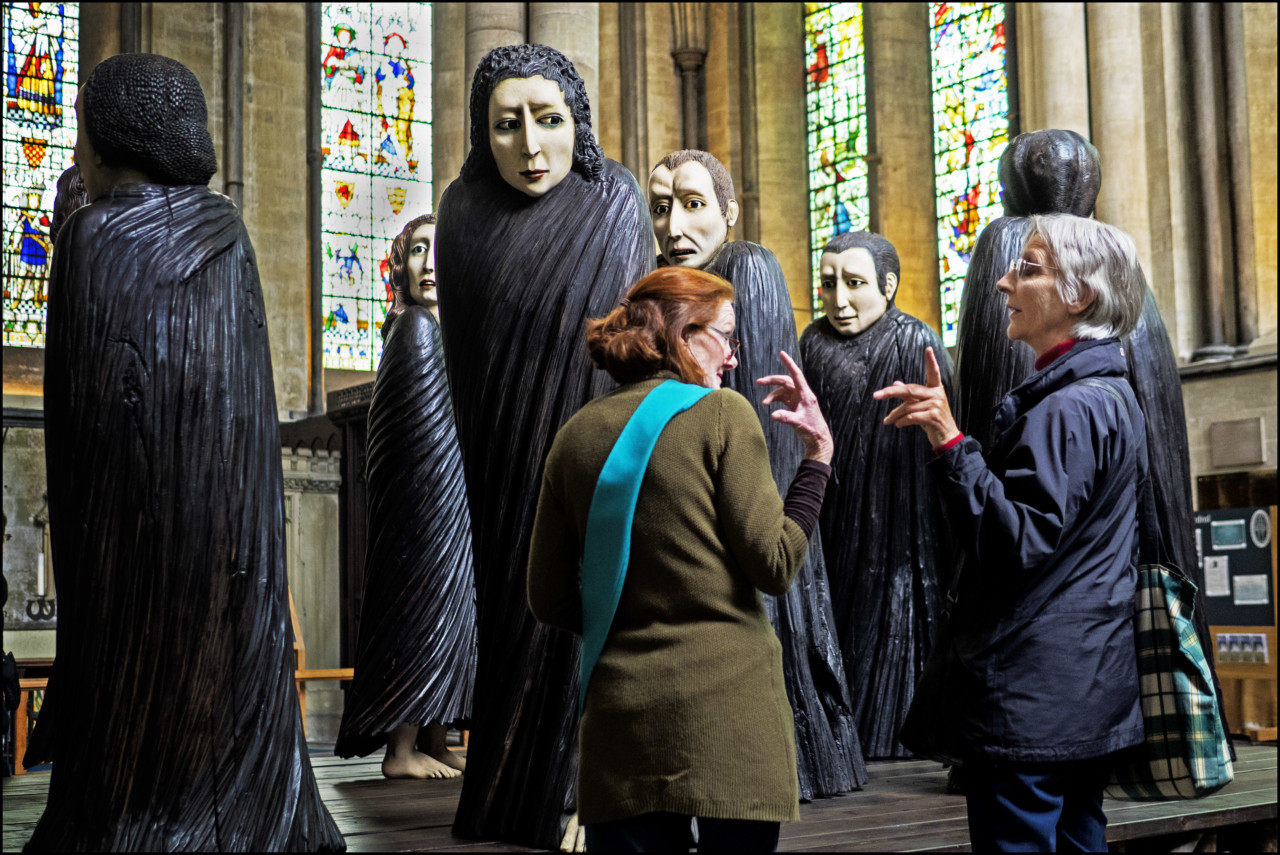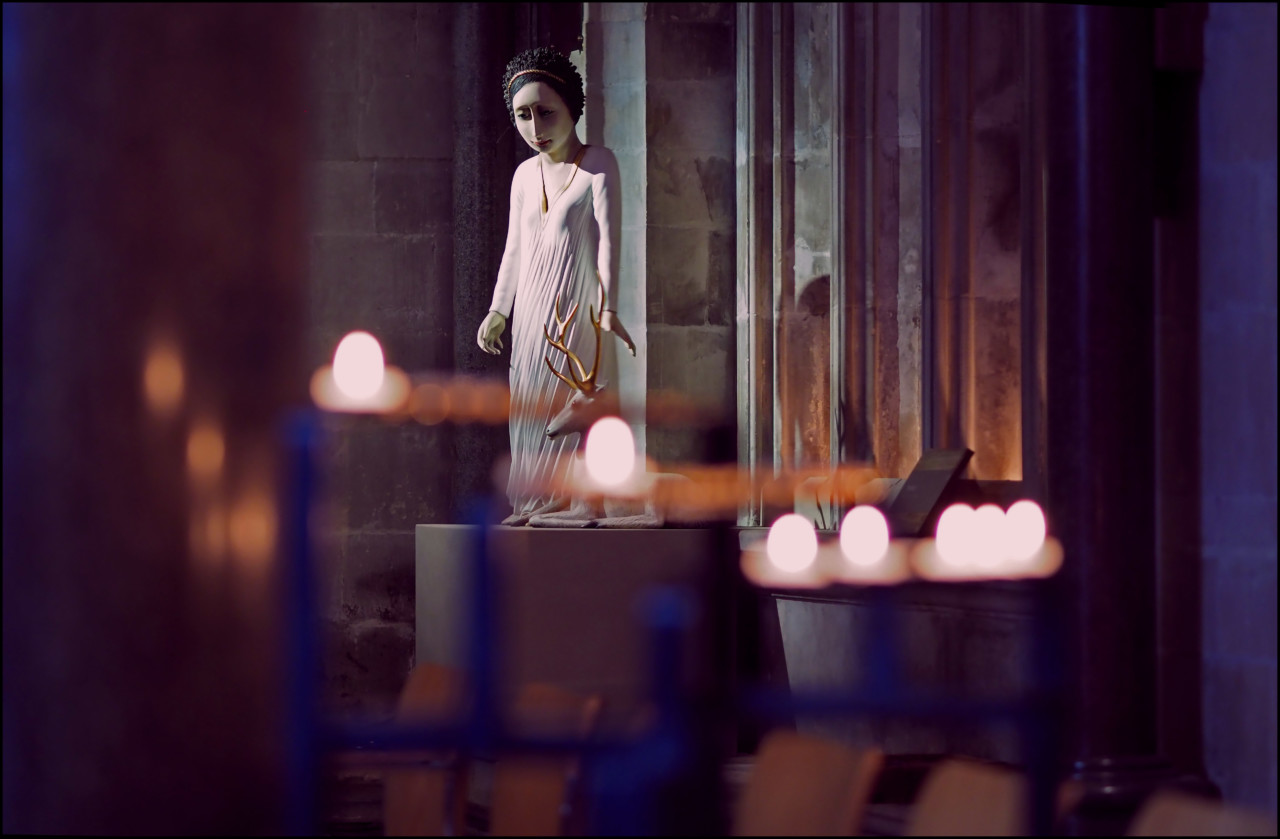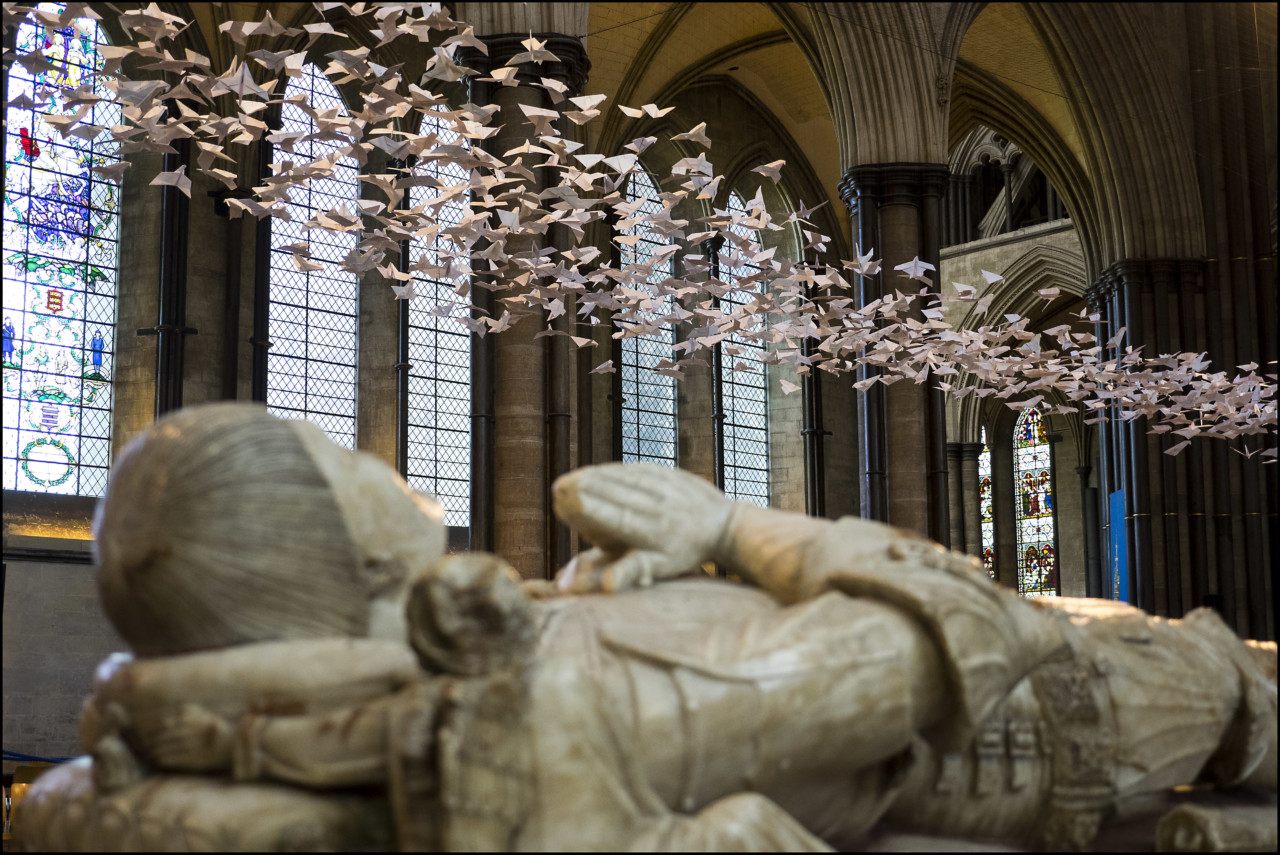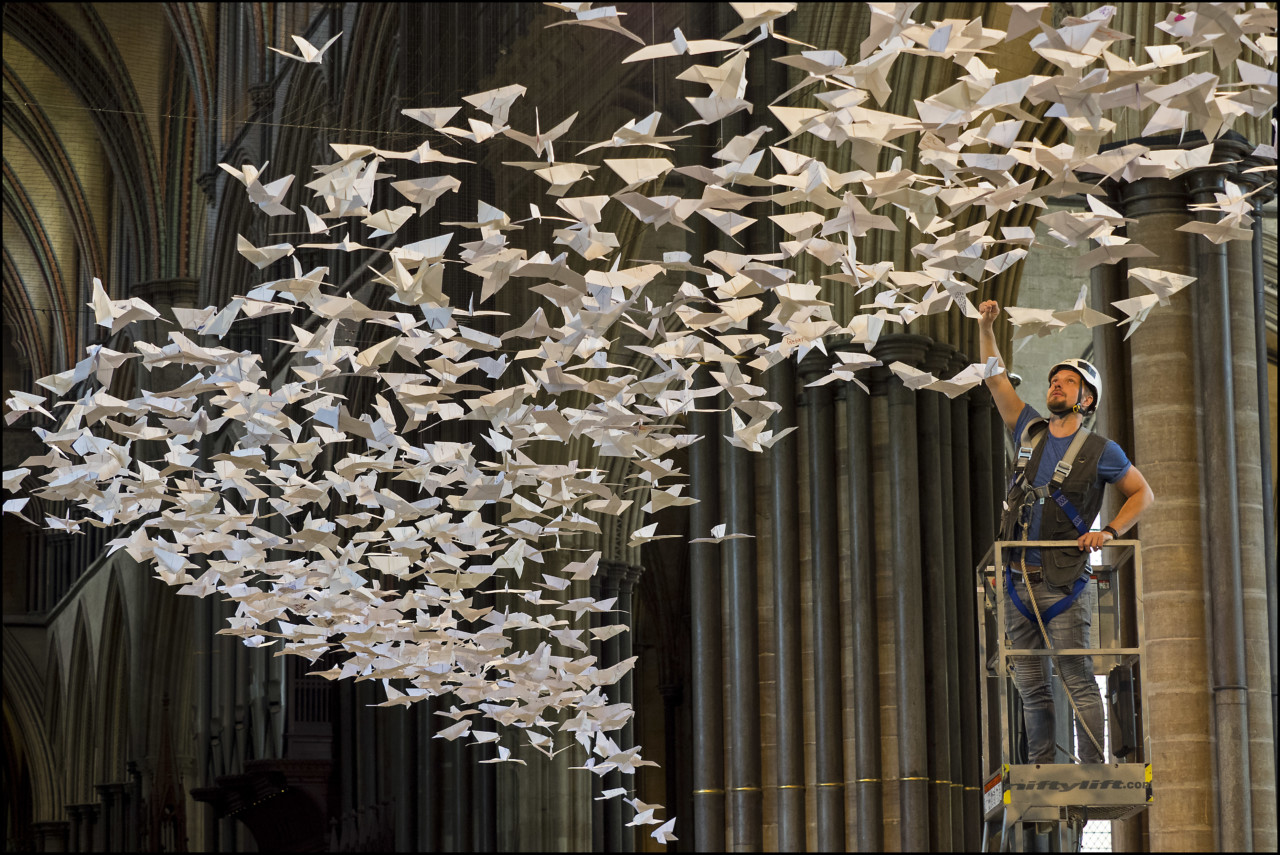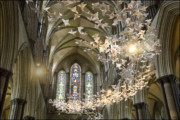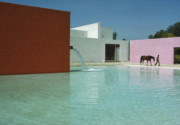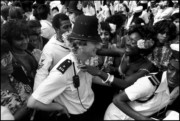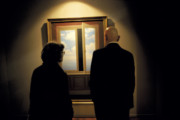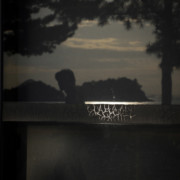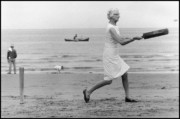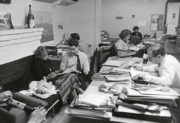800 Years of Art in Salisbury Cathedral
Ian Berry explores Salisbury's historic cathedral and its eclectic and unusual championing of the arts
Magnum photographer Ian Berry, originally from Lancashire, now lives in the historic English city of Salisbury. The city is perhaps most famous for its cathedral – unusual in that its rapid completion resulted in a unified architectural style, unlike most cathedrals in the country which were built slowly, incorporating changes in both circumstances and tastes.
As Berry notes, “When built, these majestic medieval cathedrals were the art galleries of their day, none more so than Salisbury with its single style architecture of slender columns and soaring ceilings and its sculptures, larger than life on the west door depicting saints and bishops. On a more intimate scale in the Chapter House, carvings of ordinary people going about their business. What is so wonderful is that the mason who carved these small masterpieces used the faces of the workers around him to bring the frieze of daily life at that time, to vivid relief for everyone looking at them now.”
Today the cathedral offers a more literal route to the arts for its many visitors. The grassed close, and the nave itself, are host to an eclectic and evolving series of art installations.
Berry was first drawn to the cathedral by its claim to possessing the best-preserved copy of the Magna Carta in the country. That famous charter, first agreed to by King John and then updated by monarchs who followed him, drew Berry to discover more about the cathedral’s wide-reaching arts program – from its championing of local prison-made work to its Henry Moore sculptures. “Painted extensively by John Constable, an English Romantic painter, the cathedral has been the inspiration for art throughout the centuries since the first stone was laid, and today continues the tradition by providing exciting exhibitions showcasing contemporary artists working in all mediums.” Notes Berry.
While Berry could not photograph the faces of prisoners at Erlestoke, he did document their artistic processes, as well as a variety of tradesmen working in and around the Cathedral, from masons to glass makers. “I just started shooting around the cathedral, anything that seemed interesting. I would potter along and see what was happening.”
Saddened by his hometown “becoming known all around the world for all the wrong reasons”, following the Novichok poisonings of Sergei and Yulia Skripal, Berry noted the work of artist Michael Pendry who subsequently installed his “Les Colombes” in the cathedral’s nave: “Exhibited before in Munich, Jerusalem, London, San Francisco and Berlin, the artist engages community groups and individuals in each place to fold their own origami doves which are then added to the next installation. Flying the length of the nave from the altar to the west door, 2,500 white paper doves symbolise a fundamental human right to peace and freedom.”


